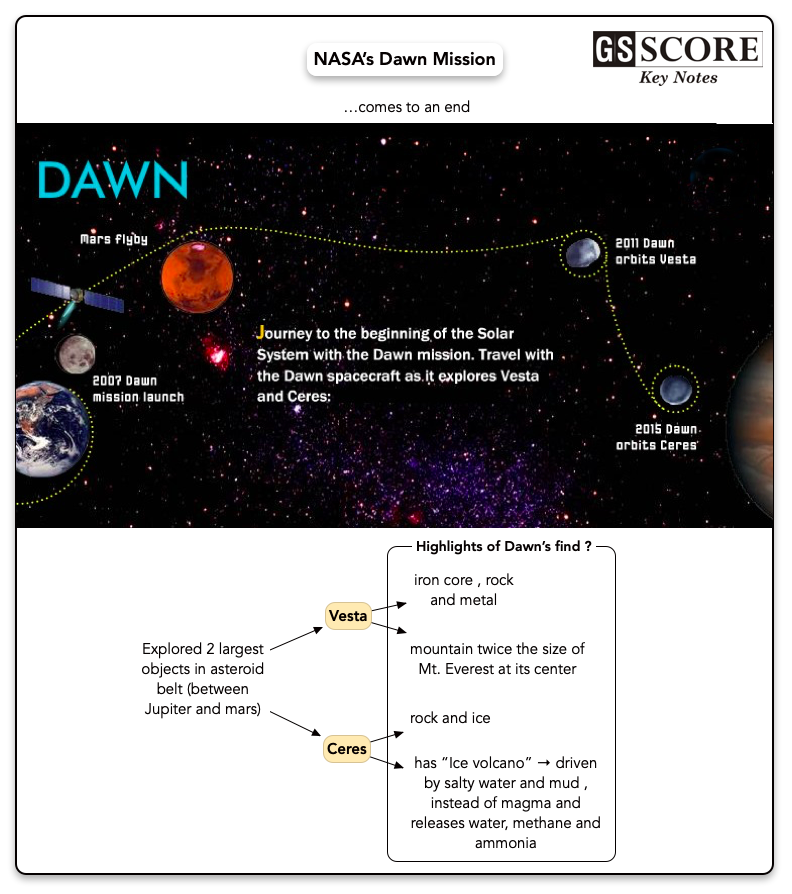

NASA has announced end of its historic DAWN mission.
Context
NASA has announced end of its historic DAWN mission.
About
- Dawn was a space probe launched by NASA in September 2007 to study two of the three known proto planets of the asteroid belt, Vesta and Ceres.
- It was the first and only mission to visit both Vesta and Ceres.
- It was also NASA's first deep space mission to use ion propulsion.
- It used three xenon-fueled ion engines for its main source of propulsion beside its maneuvering thrusters which depend on hydrazine.
- DAWN mission was extended 11 years more than its expected life span.
PROTO-PLANET:
Proto-planets are small celestial objects that are the size of a moon or a bit bigger. They are small planets, like an even smaller version of a dwarf planet. Astronomers believe that these objects form during the creation of a solar system.
CRYOVOLCANO:
A Cryovolcano (as known as ice volcano) is a type of volcano that erupts volatiles such as water, ammonia or methane, instead of molten rock.
Significance
- Dawn mission gave deep insight on understanding about protoplanets of Asteroid belt. It revealed the irregular relief of Vesta in dramatic detail, mapping it from pole to pole while probing it from core to surface.
- It also gave key insights into the cryovolcanic activity erupting on the surface of Ceres and a look at an active dwarf planet. Between Ceres and Vesta, Dawn explored about 45% (nearly half) of the mass of the main asteroid belt.




